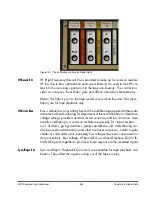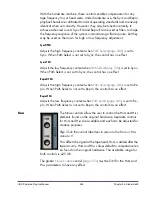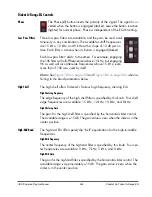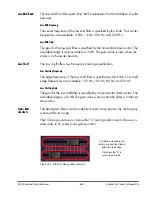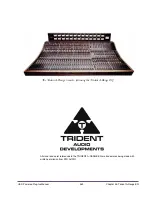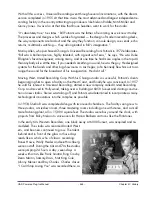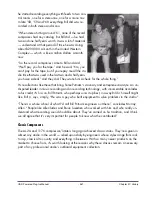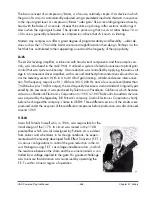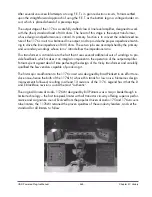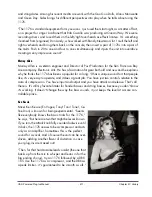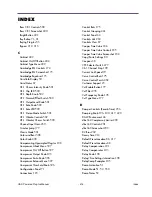
UAD Powered Plug-Ins Manual
- 564 -
Chapter 57: History
Universal Audio. It wasn't long before the company relocated to Chicago, and it was there, in
1947, that Putnam recorded what is generally accepted to be the first “pop” record to use ar-
tificial reverberation. The founder of the group The Harmonicats, Jerry Murad, wanted to record
using an echo chamber like he'd heard on effects in spooky radio mysteries. Putnam not only
financed the record for a piece of the profits, he came up with the idea of using the tiled men's
room at Universal Recording to create that echo. The Harmonicats song “Peg-O-My-Heart,” be-
came the first million seller smash with more than 1,400,000 copies sold, and the rest was,
well, history.
Landmark Recordings Bruce Swedien, a teenager at the time, recalls that the sound on “Peg-O-
My-Heart” was a seminal influence on him. “It was the first pop music recording where artifi-
cially controlled reverb was used for artistic effect,” he explains. “Many of the recordings that
were done prior to that had reverb, but it was part of the acoustics of the recording environ-
ment. Bill's contribution to the art was that he literally came up with the design of the way the
echo or reverb sound is sent from the recording desk and the way it's returned to the mix so that
it can be used in a variable amount.
“I was a youngster in Minneapolis in the early 50s when I first heard “Peg-O-My-Heart,” Swed-
ien continues, “And I can remember it like it was yesterday. It had an extraordinary effect on
me. I didn't understand how the techniques were done, but I knew it had tremendous artistic im-
pact.”
Putnam's engineering credits grew quickly; at that time he worked with artists such as Patti
Page, Vic Damone and Dinah Washington, and had a million selling record on his own Uni-
versal Records label with “Jealous Heart” by Al Morgan. A number of firsts occurred at Univer-
sal: the first use of tape repeat, the first vocal booth, the first multiple voice recording, the first
8-track recording trials and experiments with half speed disc mastering.
Universal was becoming famous, doing recordings for the Chicago based labels VeeJay, Mer-
cury and Chess. It was a hub for rhythm and
blues recordings including cuts for Muddy Wa-
ters, Willie Dixon, Bo Diddley, Little Walter,
and Chuck Berry. Jazz artists recorded by Put-
nam included Stan Kenton, Tommy Dorsey,
Count Basie, Dizzy Gillespie, Ella Fitzgerald,
Sarah Vaughn, Nat King Cole, and the mas-
ter, Duke Ellington. Putnam was also produc-
ing records for Decca, as well as writing songs
and lyrics.
Содержание UAD
Страница 172: ...UAD Powered Plug Ins Manual 172 Chapter 12 Ampex ATR 102 Original Ampex ATR 102 Mastering Recorder Brochure ...
Страница 294: ...UAD Powered Plug Ins Manual 294 Chapter 27 Lexicon 224 Lexicon 224 Screenshot Figure 99 The Lexicon 224 plug in window ...
Страница 482: ...UAD Powered Plug Ins Manual 482 Chapter 47 Pultec and Pultec Pro Dip Response Figure 155 Pultec MEQ 5 Dip Response ...
Страница 497: ...UAD Powered Plug Ins Manual 497 Chapter 48 RealVerb Pro Figure 166 RealVerb Pro in Morphing mode ...




